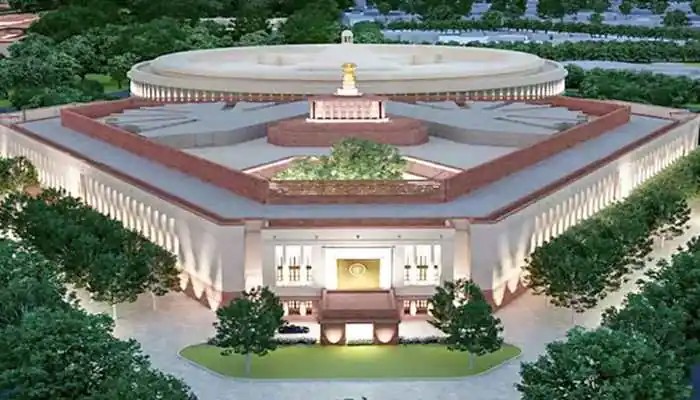The Washington DC-based Atlantic criticises the Narendra Modi government for the Central Vista project, calling it a wasteful expenditure without evaluating its merits—environmentally, culturally and economically
Claim:
The Atlantic said Modi is undertaking an ambitious plan to refashion the entirety of what we call Lutyens’ Delhi, due to be completed in 2024. Modi’s government rushed the plans through, with barely any consultation. Almost overnight, the government dug up the area, blocking roads, creating diversions. The $2.8 billion budget is, at minimum, questionable, given the parlous state of the Indian economy and the livelihoods of our compatriots reeling from a brutal pandemic. The project lacks foresight about its impact on the environment, or Delhi’s horrific air pollution.
Counterclaim:
Half-baked knowledge is very dangerous. First of all, those who criticise the project, should know that it involves redevelopment of the Central Vista, an area that stretches from Vijay Chowk to India Gate. It involves planning in a new way Lutyens Delhi’s 86-acre area by having a new parliament, vice president, Prime minister’s residences and all ministries and departments at one place. That means not only it will help in saving crores of rupees annually, but also in protecting the environment.
In November 2020, Solicitor General Tushar Mehta defended the Central Vista project before the Supreme Court, saying it will save public money worth Rs 1,000 crore that the government has been spending annually on rent expenditure. Environmental factors have also been taken into account while developing the Central Vista. In this regard then Union Environment Minister Prakash Javadekar reply to a query in the Rajya Sabha last year assumes high significance. He told the Parliament on March 16, 2021 that there was no loss of green cover due to the Central Vista project, instead, it would enhance the greenery by 5.4 acres in the area.
In particular, it will increase approximately 20,000 square metres of greens along Rajpath, a ceremonial boulevard that runs from Rashtrapati Bhavan on the Raisina Hill through Vijay Chowk and India Gate, National War Memorial in New Delhi. The existing Parliament building is almost 100 years old and over the years, the parliamentary activities, number of people working there and visitors have increased manifold. Modifications and new constructions done in an ad-hoc manner, are showing signs of distress on the Parliament building.
Beginning its construction in 2021, the Parliament building lacks space to meet the day, today requirements. Lok Sabha (Lower House of Parliament) seats which remain unaltered at 545, will increase substantially after 2026 as the freeze on the total number of seats is only till 2026. This apart, when joint sessions of the Parliament are held, it becomes very difficult for lawmakers to find seats for them because the Central Hall, where joint sessions are conducted, has a capacity to accommodate only 440 MPs. It is in this background, the building of the new Parliament house is highly required.
Then the Central Vista project, envisaging a common secretariat for 51 ministries, will end a shortfall of about 0.38 million square metres in office space. This apart, it has been ensured that heritage buildings like India Gate, Parliament, North and South Blocks, National Archives remain intact and they are not demolished. Overall, when India is celebrating 75 years of its independence, the new Central Vista project will showcase India’s rich cultural tradition moulded in modernity. It is in hindsight a move to undercut colonial symbols and infrastructure Britishers built for their use and later when they left, were used by Indians inheriting the same mindset, attitude and working style.
Claim:
The Atlantic said PM Modi’s transformation of Delhi does not simply refashion the city’s geography; it changes our emotional attachment to a place. With the Central Vista Redevelopment Project, the cultural history of Delhi, its uniqueness, and its people all stand singularly altered.
Counterclaim:
PM Modi wants the uniqueness of the Indian tradition to be celebrated at all levels. Though he strongly desires modern architecture but doesn't shy away from celebrating India’s rich traditions. Chief Architect of the Central Vista Redevelopment Project, Bimal Patel, while talking to Quartz had said that the claims of project destroying Delhi’s age-old culture is completely farce.
The government is very mindful of the heritage character of Central Vista and the very important role that it plays in defining India. “This project is aimed at addressing the many decades of neglect of the vista’s buildings and urban elements and restoring them,” he remarked.
While refuting the claims that the project will change the geography of Delhi, Patel, back in 2020, had also reiterated that what the government is trying to do is to respect history, perhaps even strengthen the original intent by using architecture to strengthen the original diagram. “There’s nothing we are doing that doesn’t say, listen, this is exactly what (Sir Edwin) Lutyens would have done. It might be a radical change but certainly not something that breaks with the past,” he had reiterated.
Experts believe that the Central Vista project aims to significantly strengthen and boost Indian museum infrastructure and bring it at par with global standards by incorporating the latest technological features and ideas in the running of museums.
Going by the version of Alok Bhatt, a Chartered Accountant who has served as an Economic Advisor to Trivendra Singh Rawat, former Chief Minister of Uttarakhand, Tte Central Vista project is Indian State’s confident and unapologetic attempt to seek redemption and re-establish its connection with the glorious civilizational past.
“The precincts of architectural, historical, and cultural value to the Indian civilization will be added to the redeveloped area to help reinvigorate that missing link,” he said.
He also opined that The Central Vista redevelopment, by addressing all the problems, will help usher in an era of improved and modern governance through architecture!
The overall objective of works planned on the Central Vista is to ensure environmental sustainability, restore the vista’s architectural character, protect its heritage buildings, expand and improve public space and to extend its axis, Patel added.











 Contact Us
Contact Us
 Subscribe
Subscribe
 News Letter
News Letter
 Instagram
Instagram Youtube
Youtube